Located along Bulgaria’s southern Black Sea coast, Pomorie is a town rich in history and natural beauty, also a very popular seaside resort. From its origins as an ancient Greek colony to its present-day status as a beloved tourist destination, Pomorie continues to captivate all who visit.
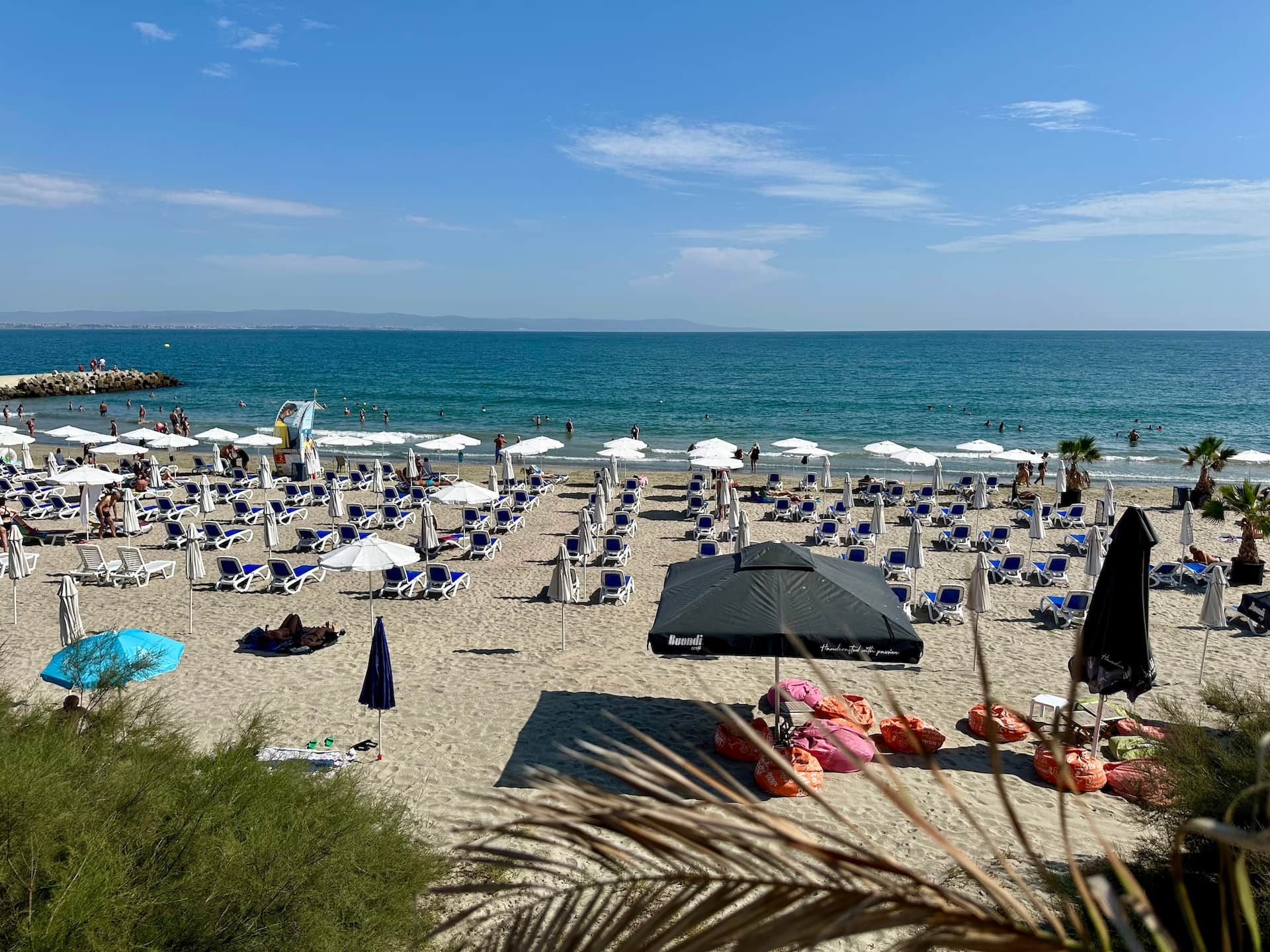
Beaches
Pomorie offers a variety of beautiful beaches that cater to different preferences. The coastline is characterized by low, sandy shores with an open horizon, protected from the north by the Balkan Mountains.
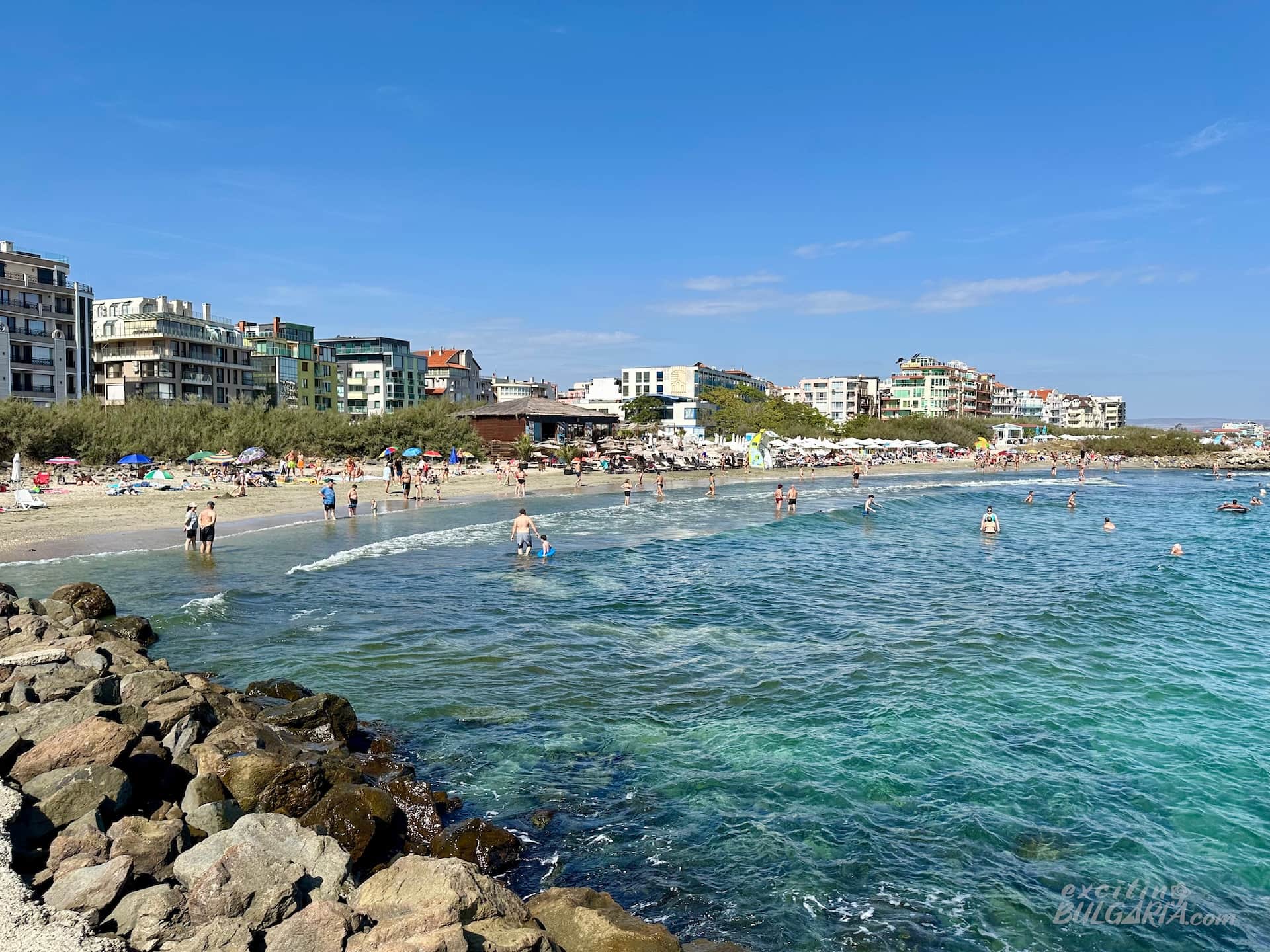
The Central Beach, also known as the Eastern Beach, stretches for 9 kilometers from the central urban area to Ahtopol. This beach is one of the longest in the region and is covered with fine sand, sometimes black due to its mineral content. The first 3 kilometers are well-maintained and guarded, and are divided into smaller sections by stone piers extending into the sea. All these separate sections have their own amenities such as umbrellas, loungers, free areas and various establishments.
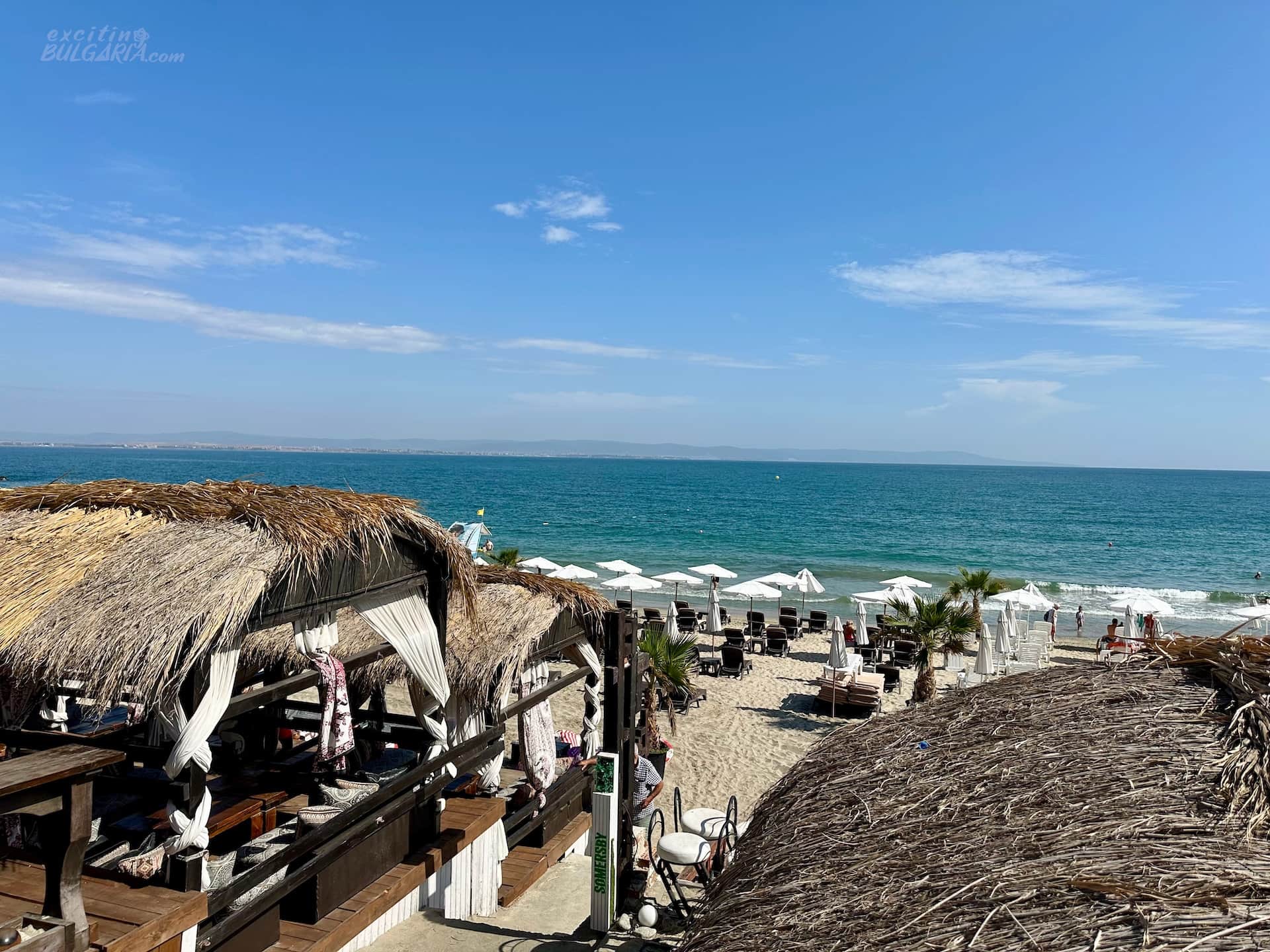
This part of the Central Beach holds the Blue Flag award for its cleanliness and high-quality services. The remaining 6 kilometers are unguarded and part of the protected Pomorie Lake territory, where the sandy strip serves as a natural barrier between the lake and the sea.
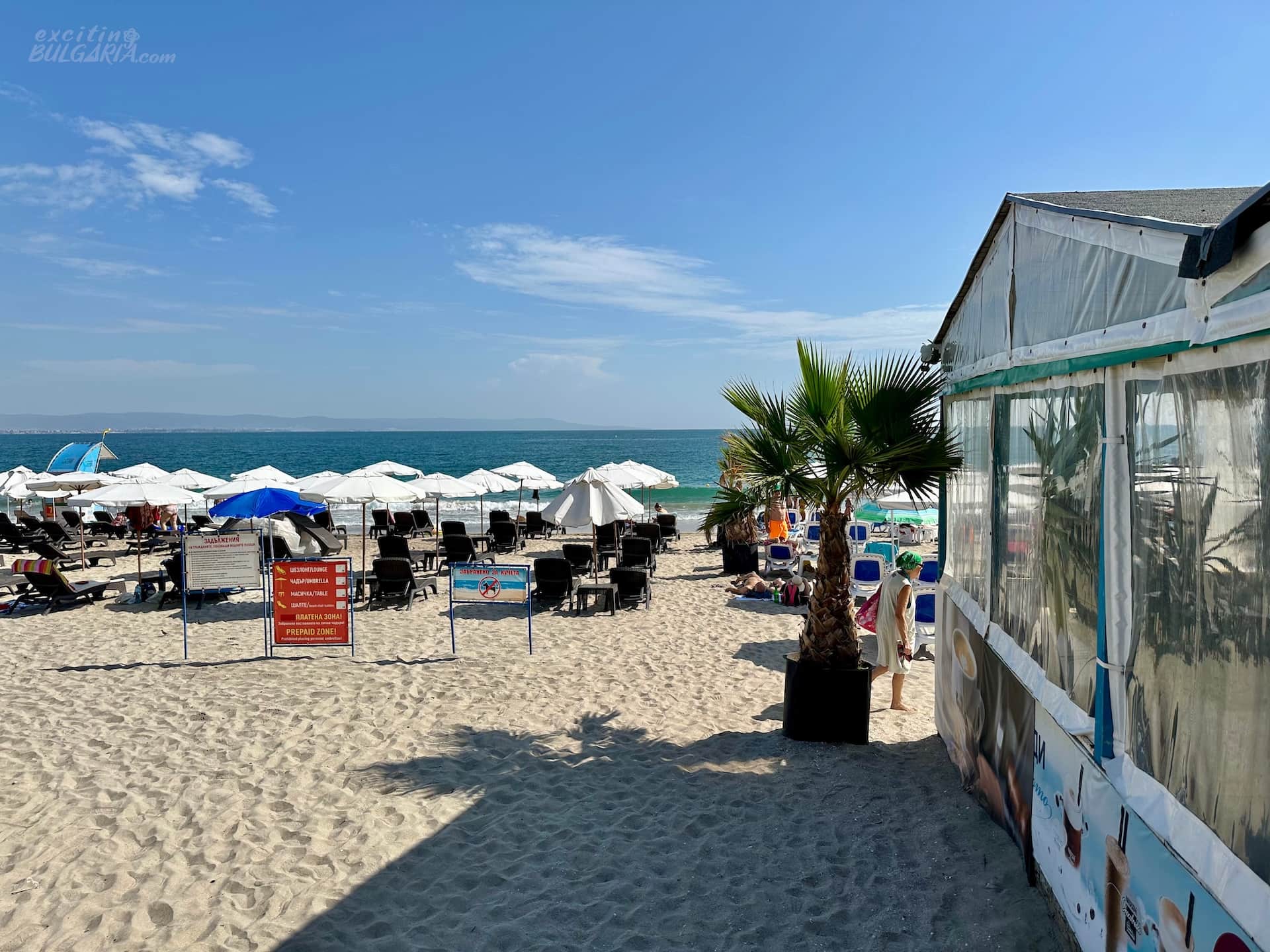
The Southern Beach, located in the new part of the city, is a more compact option at 800 meters long. It has a wider sand strip compared to the Central Beach and offers both paid and free areas for visitors. While parking can be limited, the beach is close to the bus station, making it easily accessible. The Southern Beach is flanked by luxurious hotels and affordable apartments, with nearby dining establishments and shops adding to its convenience.
History
Pomorie, originally known as Anchialos, possibly dates back to its founding in the 5th or 4th century BC by Ancient Greeks under Apollonia (today’s Sozopol) as a colony. The name “Anchialos” translates to ‘near sea’ or ‘salt,’ reflecting its strategic location near a natural salt lagoon. It is one of the oldest settlements on Bulgarian territory, with historical data suggesting it was founded in the late 5th and early 4th centuries BC.
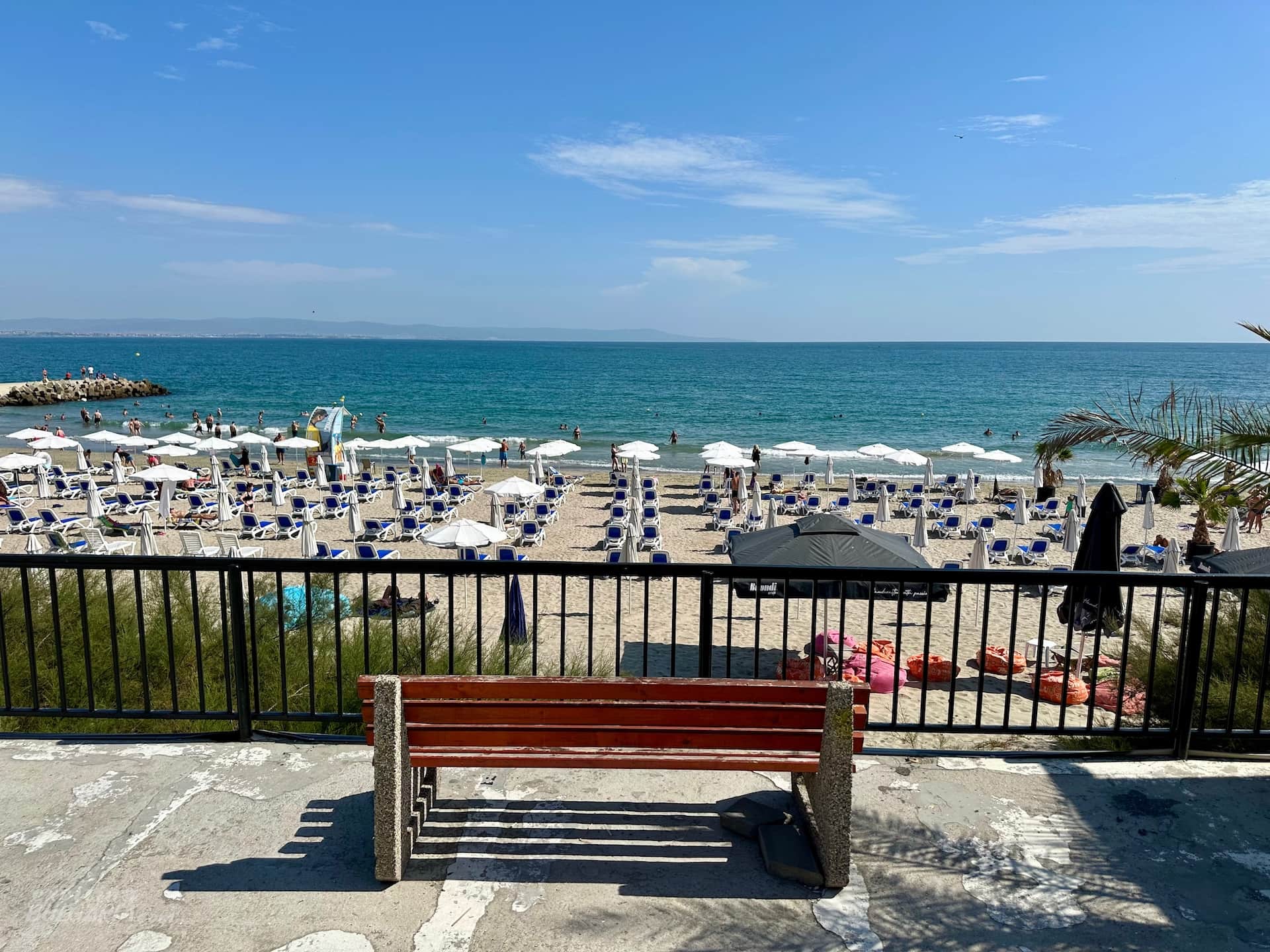
In 45 AD, Anchialos became part of the Roman Empire within the province of Thrace. The cult of nymphs was prevalent at this time, associated with three women considered to be goddesses protecting springs. This cult is linked to nearby mineral baths known as Aquae Calidae, which are today’s Burgas Mineral Springs. Under Emperor Trajan (1st century AD), Anchialos experienced significant growth and was granted city status, allowing it to mint its own coins and became a leading salt-producing center.
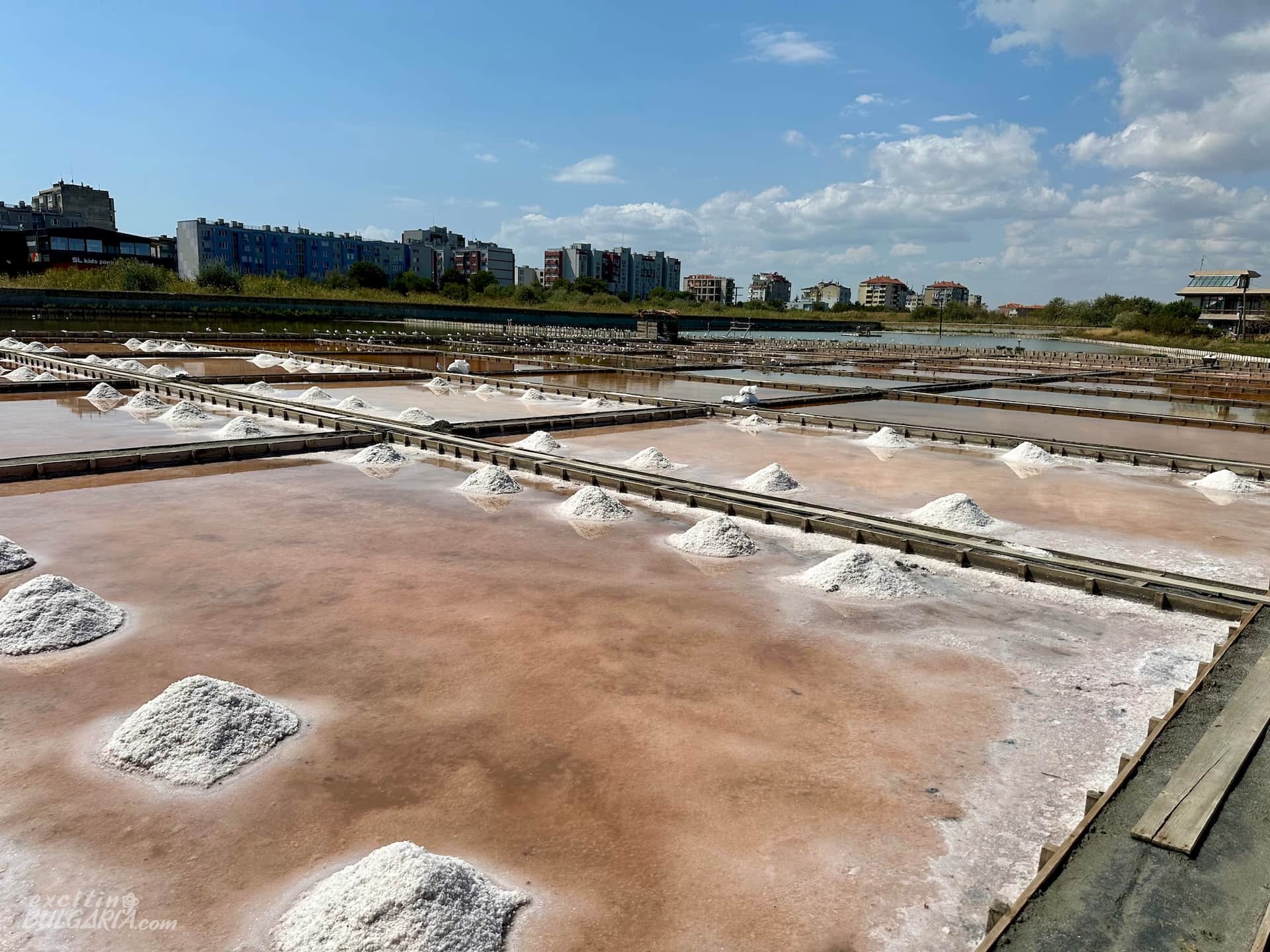
Anchialos’ strategic importance continued through the Byzantine period, often serving as a battleground between Bulgarian and Byzantine forces. During medieval times, the town played a crucial role in regional conflicts and remained an important strategic location.
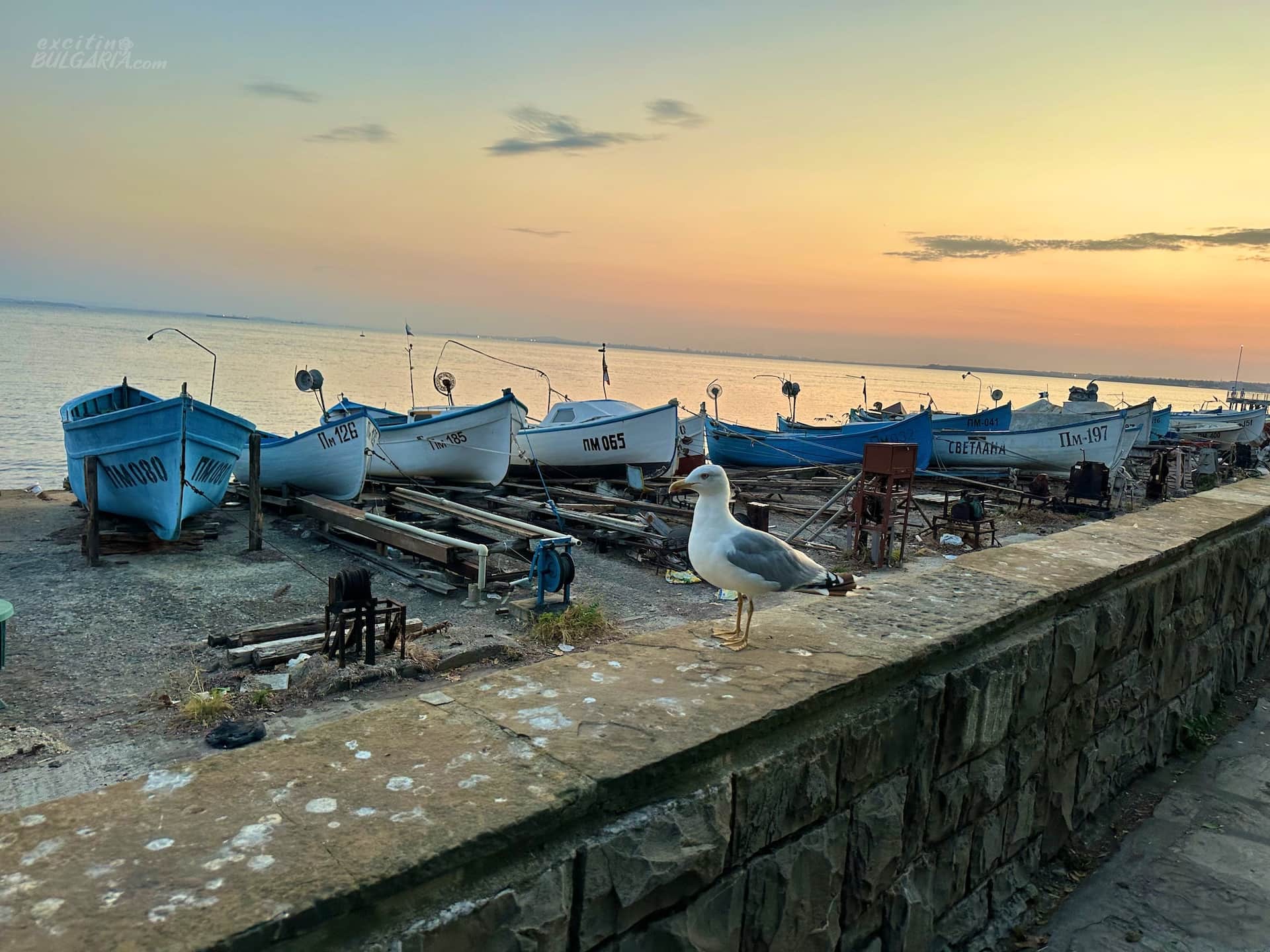
In 1453, Anchialos fell under Ottoman rule and became an administrative center encompassing the area around Sozopol. The town was liberated from Ottoman control in 1878. Despite the general decline of Black Sea towns during Ottoman rule, at liberation, Anchialos was still considered a key city in the region.
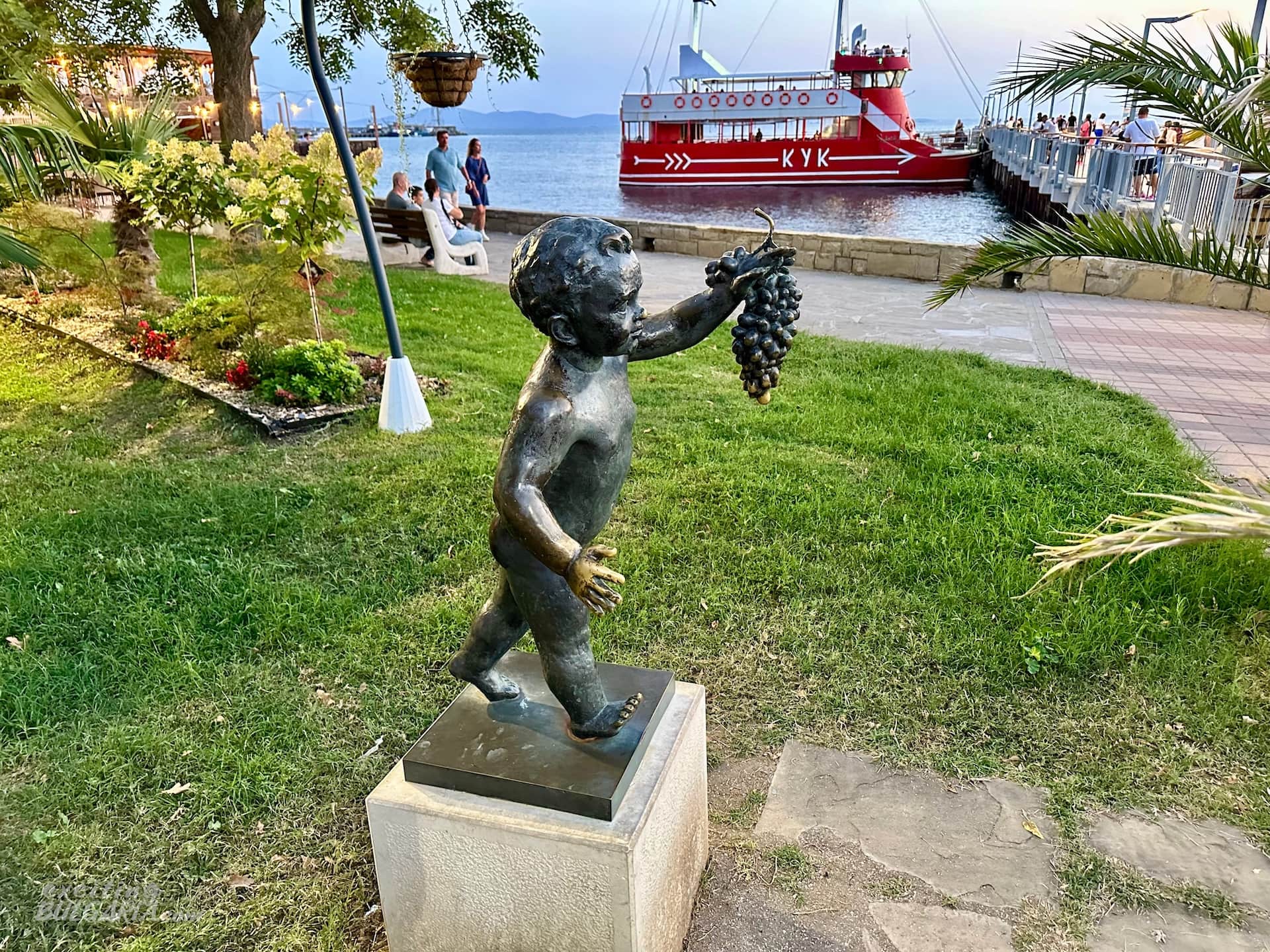
After its liberation, Pomorie remained within Eastern Rumelia until Bulgaria’s unification in 1885. Salt production continued to be the main livelihood of the locals, but viticulture and winemaking also developed strongly. In 1934, the name of the town was changed from the ancient Greek “Anchialos” to the Bulgarian “Pomorie”. The latter name translates as ‘by-the-sea’, echoing one possible etymology of the original Greek title. This renaming was part of a broader initiative aimed at unifying place names across Bulgaria.
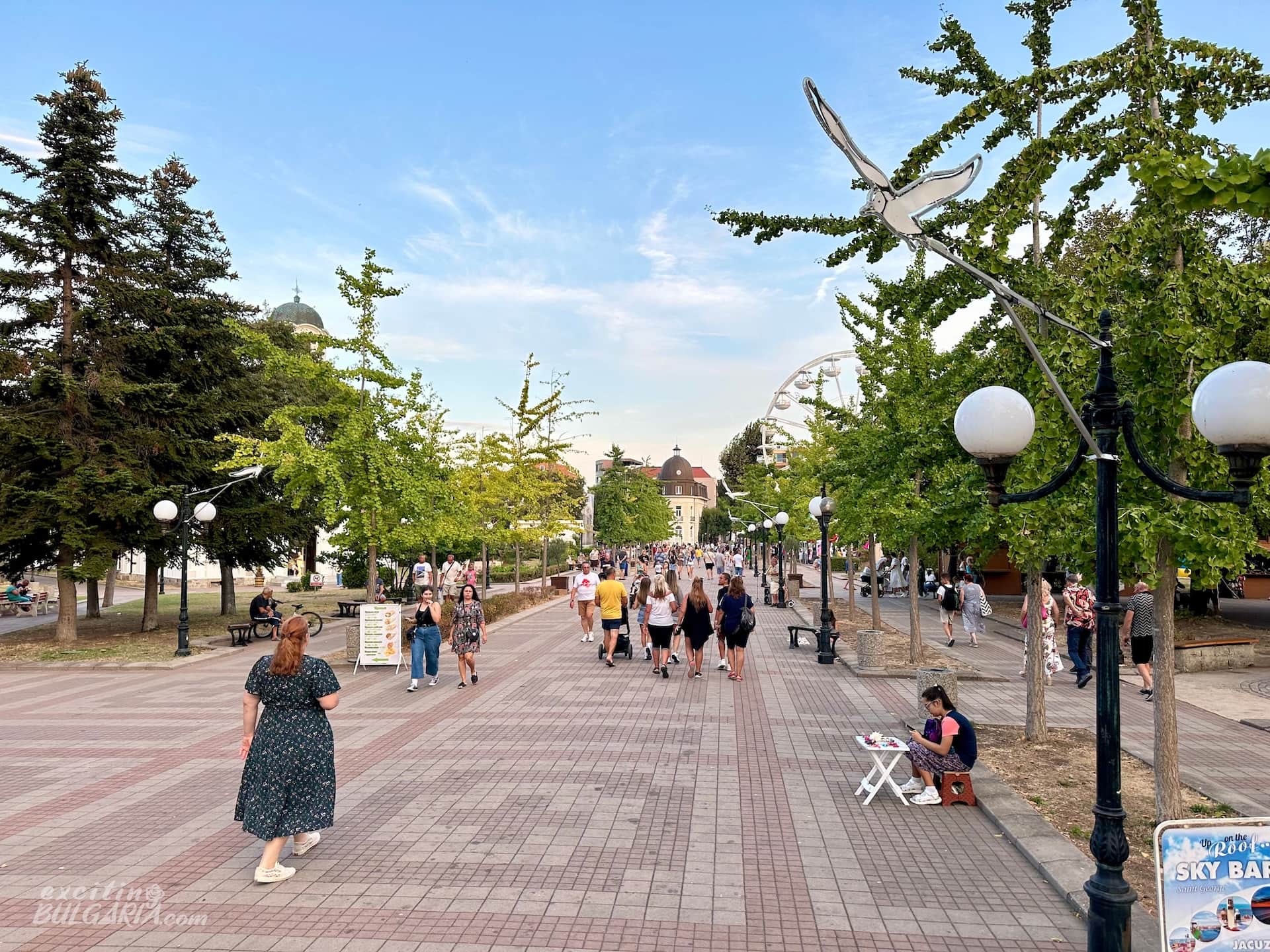
What To See In Pomorie
Pomorie Monastery “Saint George the Victorious”
The Pomorie Monastery “Saint George the Victorious” is probably the most significant religious and historical site in Pomorie. Founded on the site of an ancient Thracian sanctuary and later a Byzantine monastery from the 7th century, the current church was built in 1856. The monastery is renowned for its healing water and aromatic wine. It houses valuable icons from the mid-19th century and features a unique relief of Saint George above the holy spring.
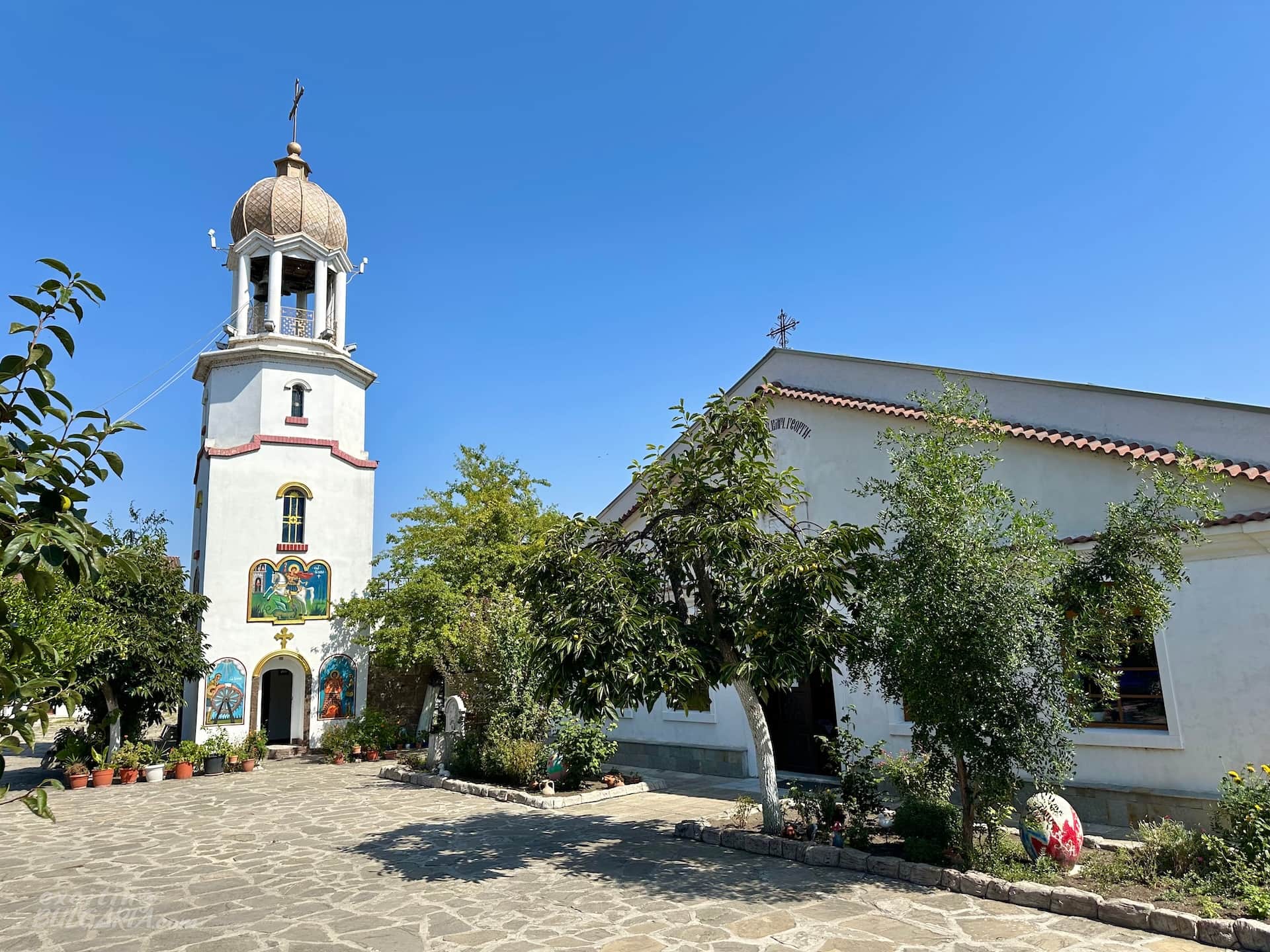
In 1945, the church was expanded with two side altars. The monastery’s bell tower, standing 20 meters tall, was constructed in 1966. As the only active male monastery in Southeastern Bulgaria, it represents a remarkable architectural monument from the Revival period.
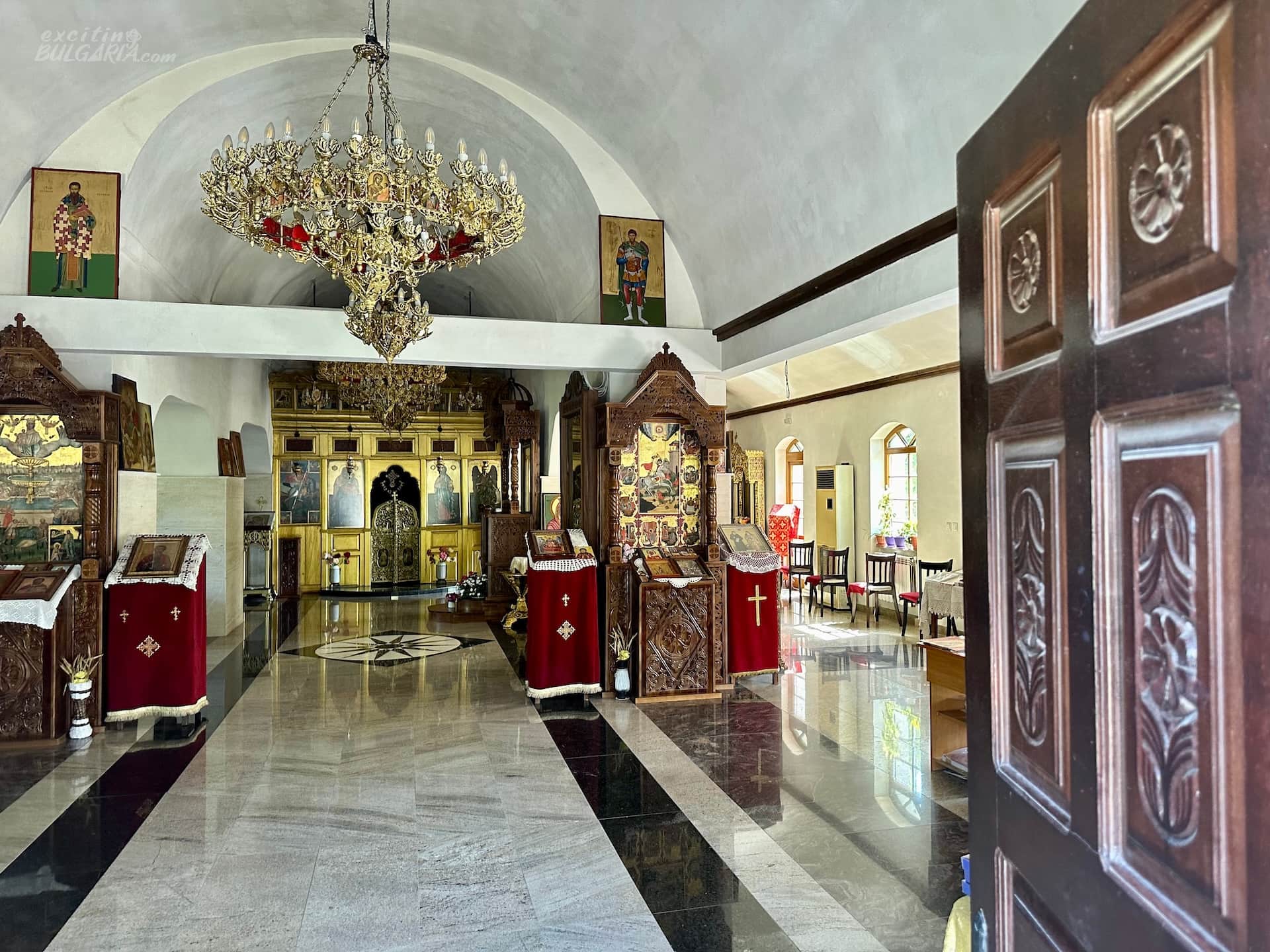
Pomorie Lake
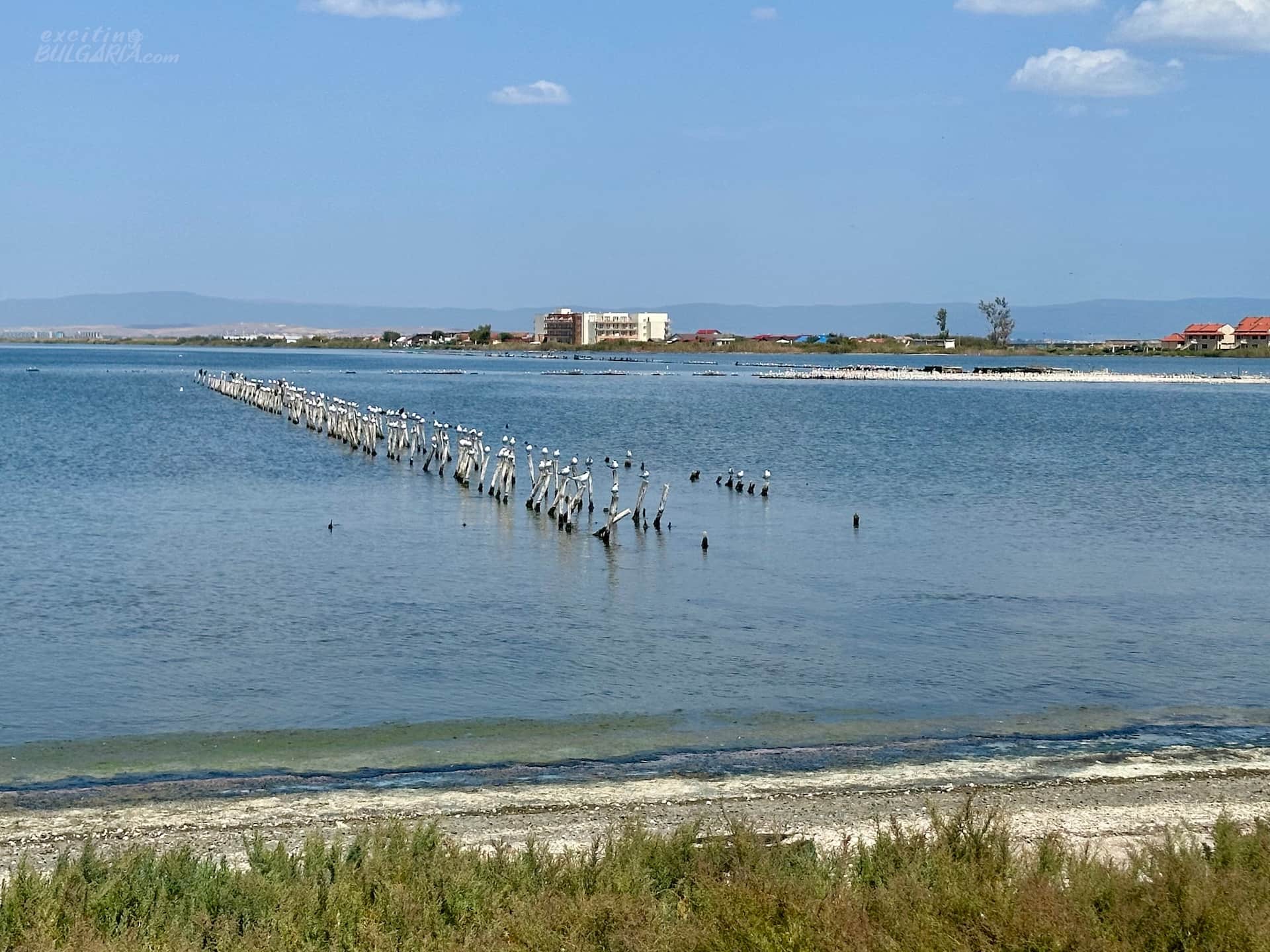
Pomorie Lake is a natural hypersaline lagoon that plays a vital role in the town’s ecological and economic landscape. Separated from the sea by a sandy spit, it has an artificial channel connecting it to the sea. The lake is known for its therapeutic mud used to treat musculoskeletal disorders, skin conditions, and reproductive system issues. It also serves as a significant site for salt production and is home to diverse flora and fauna, making it an important ornithological area. As part of Europe’s second-largest bird migration route (Via Pontica), the lake hosts nearly 300 species of birds and is under NATURA 2000 protection.
Salt Museum
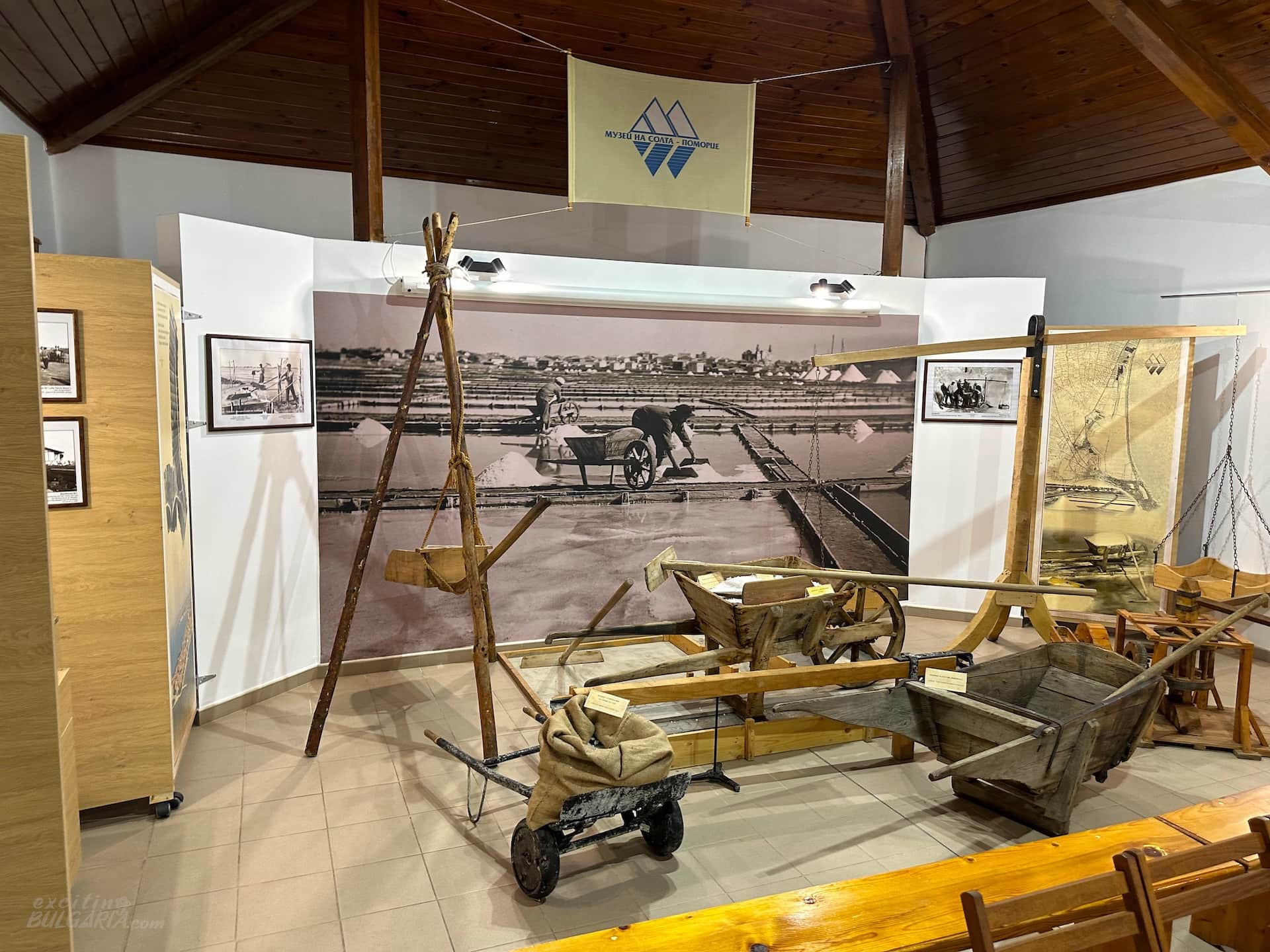
The Salt Museum in Pomorie, located on the shore of Pomorie Lake, was established in 2002 with financial support from the EU and local authorities. It is unique in Bulgaria and Eastern Europe for its focus on salt production through solar evaporation of seawater. The museum features an exhibition hall and 20 hectares of active salt pans, showcasing ancient Anchialo technology. Visitors can witness the entire salt production process, learn about the craft from experienced workers, and explore a rich collection of photographs, tools, and historical artifacts.
Architecture Ensemble “Old Pomorian Houses”
The reserve “Old Pomorian Houses” is located near the seafront in the eastern part of the old town of Pomorie. Comprising 10 houses built in the 19th century, this ensemble showcases typical Revival architecture and features unique elements such as wooden bay windows on consoles, balconies with lacy railings, and wave-shaped lines of roof tiles. The houses are privately owned but can be seen from the narrow cobblestone streets.
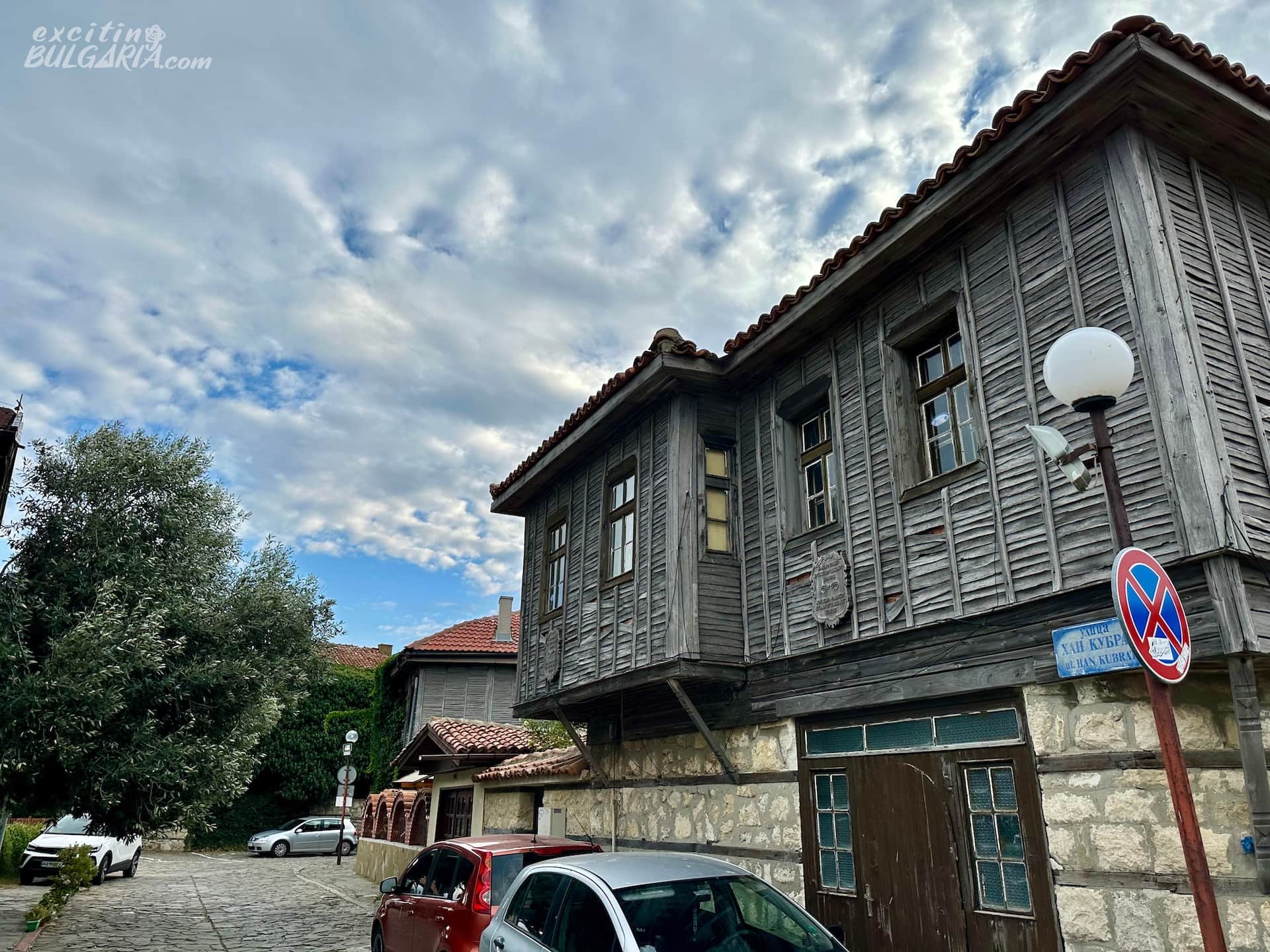
These two-story buildings feature a ground floor made of stone, serving both as a basement and commercial space for shops or workshops. Above it, the second floor is a residential area with timber walls and framing.
Interior wooden staircases ascend to the second levels of these houses, opening up to a central hall surrounded by other living spaces. The yards are modest in size, often decorated by fig trees. Interestingly, this part of town was one of the few areas that remained untouched during the devastating fire of 1906.
Church of the Transfiguration
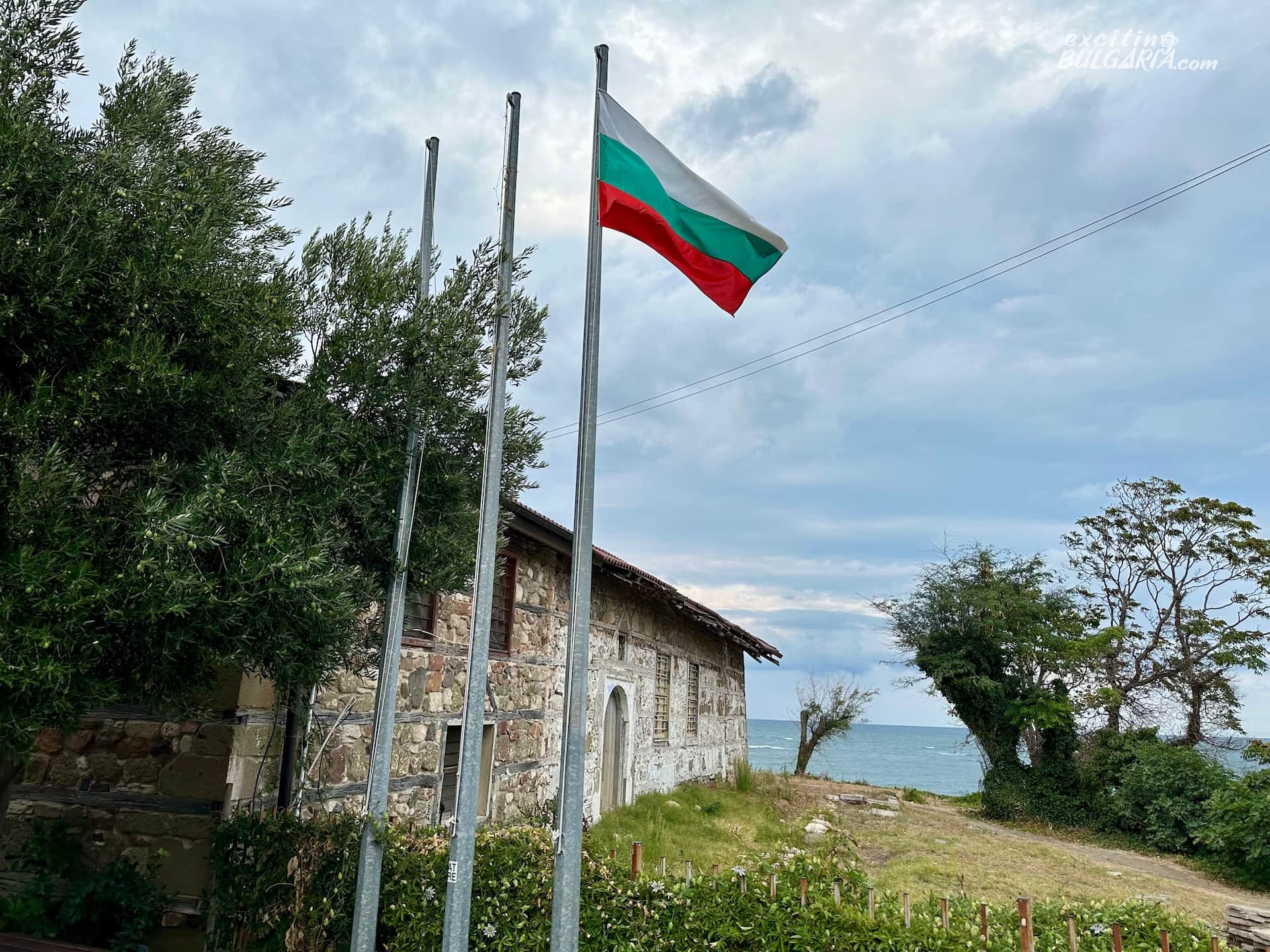
The Church of the Transfiguration in Pomorie is the oldest active Orthodox church in southern Bulgaria and the oldest building in the town. Built on the site of a smaller 9th-century church, it was completed in 1765. The three-nave church with wooden ceilings is entirely constructed of stone. Its iconostasis features carved wood with floral motifs, and below the icon of Jesus Christ is a spring with holy water. This historical site offers a glimpse into the rich religious heritage of the region.
Summer Cinema “Yavorov”
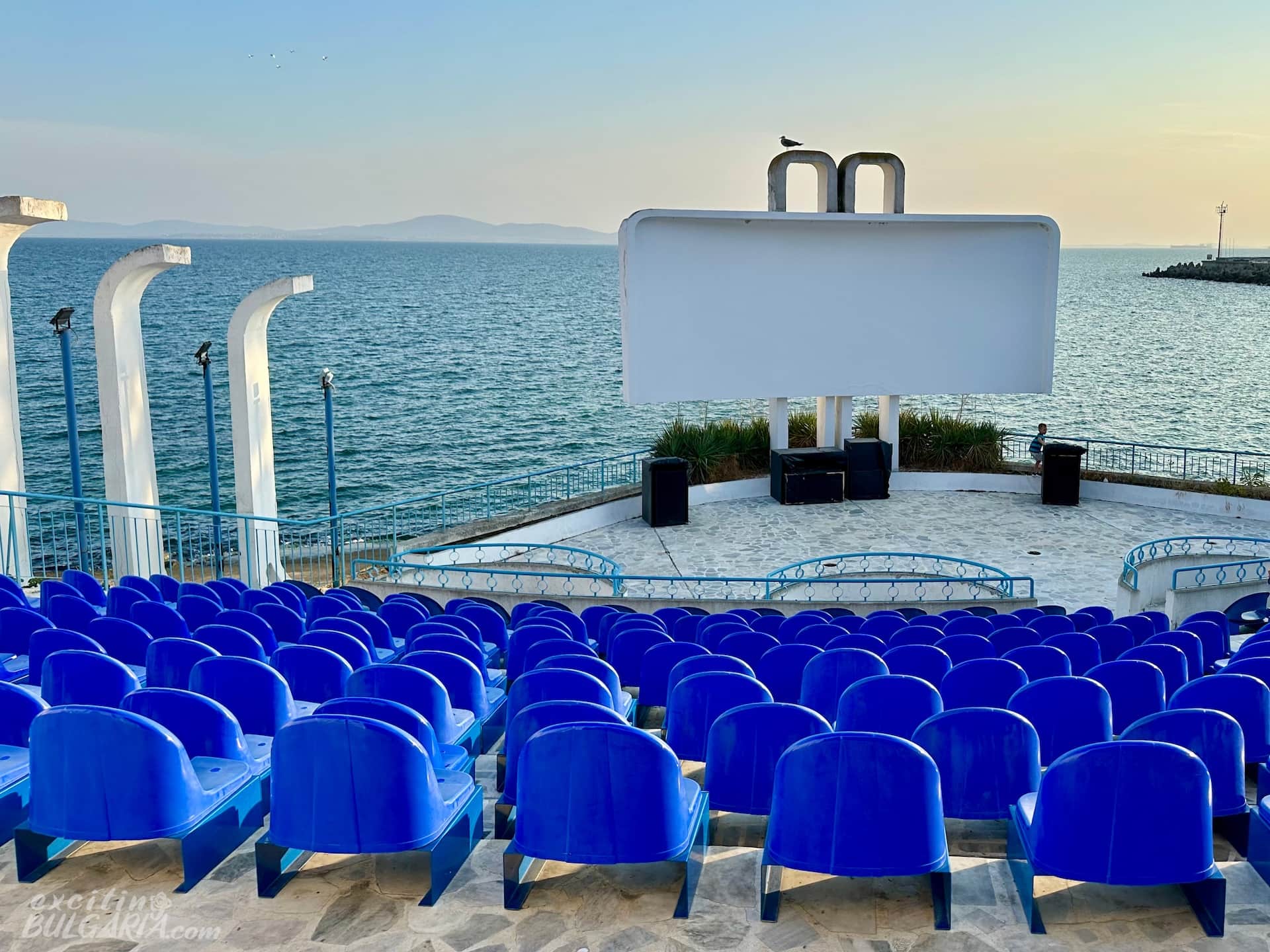
The summer cinema “Yavorov” in Pomorie is an emblematic landmark that has been renovated to offer visitors a unique experience. With new comfortable seats, a luxury zone, and four beautiful boxes, it provides an idyllic setting for enjoying films while admiring the sea views. The surrounding area is landscaped with exotic plants, enhancing the charm of this historical venue. A white stone statue of P.K. Yavorov stands on the seafront, commemorating the poet and revolutionary. Every summer, “Yavorov Days” are celebrated with a rich cultural program, attracting admirers from across the country.
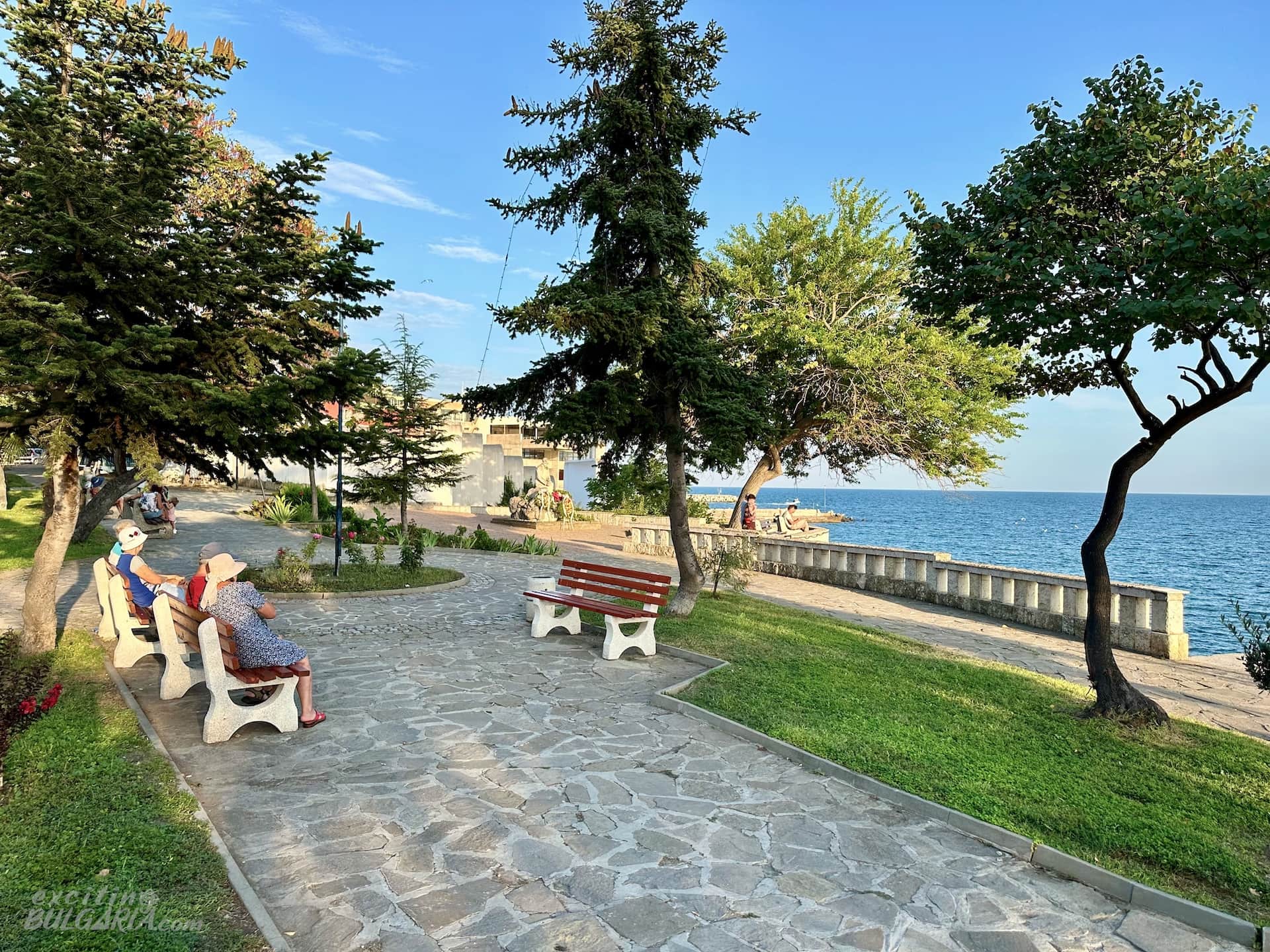
The Old Pier
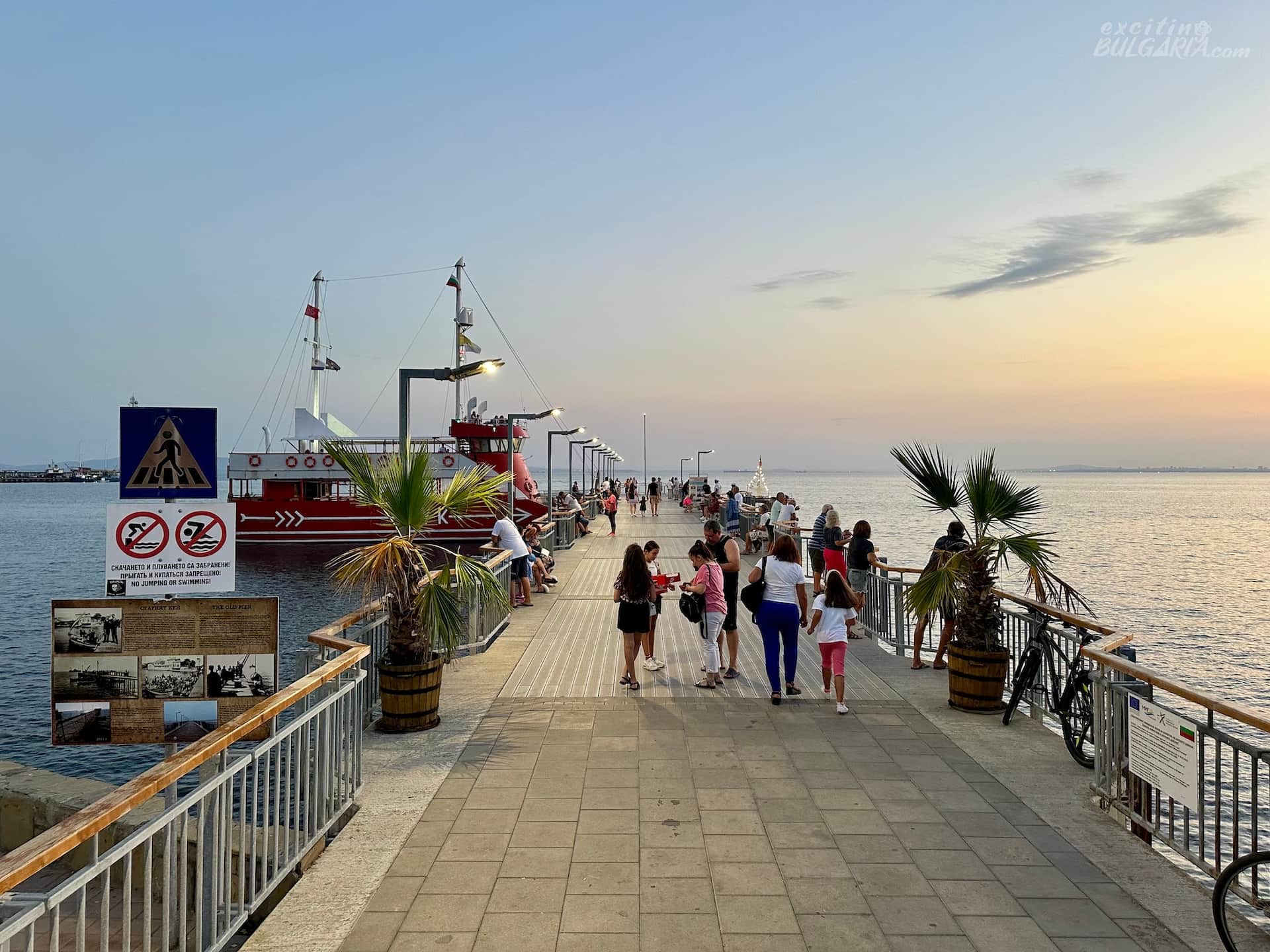
The Old Pier in Pomorie is an emblematic structure with a long history dating back to the 19th century. Originally built as a wooden pier, it was later reinforced with concrete. After decades of wear from salt and moisture, it underwent significant renovation in 2015. Today, it offers a new look and serves as a popular spot for residents and tourists to enjoy leisurely walks and views of the sea and the boats of the fishing marina to the south.
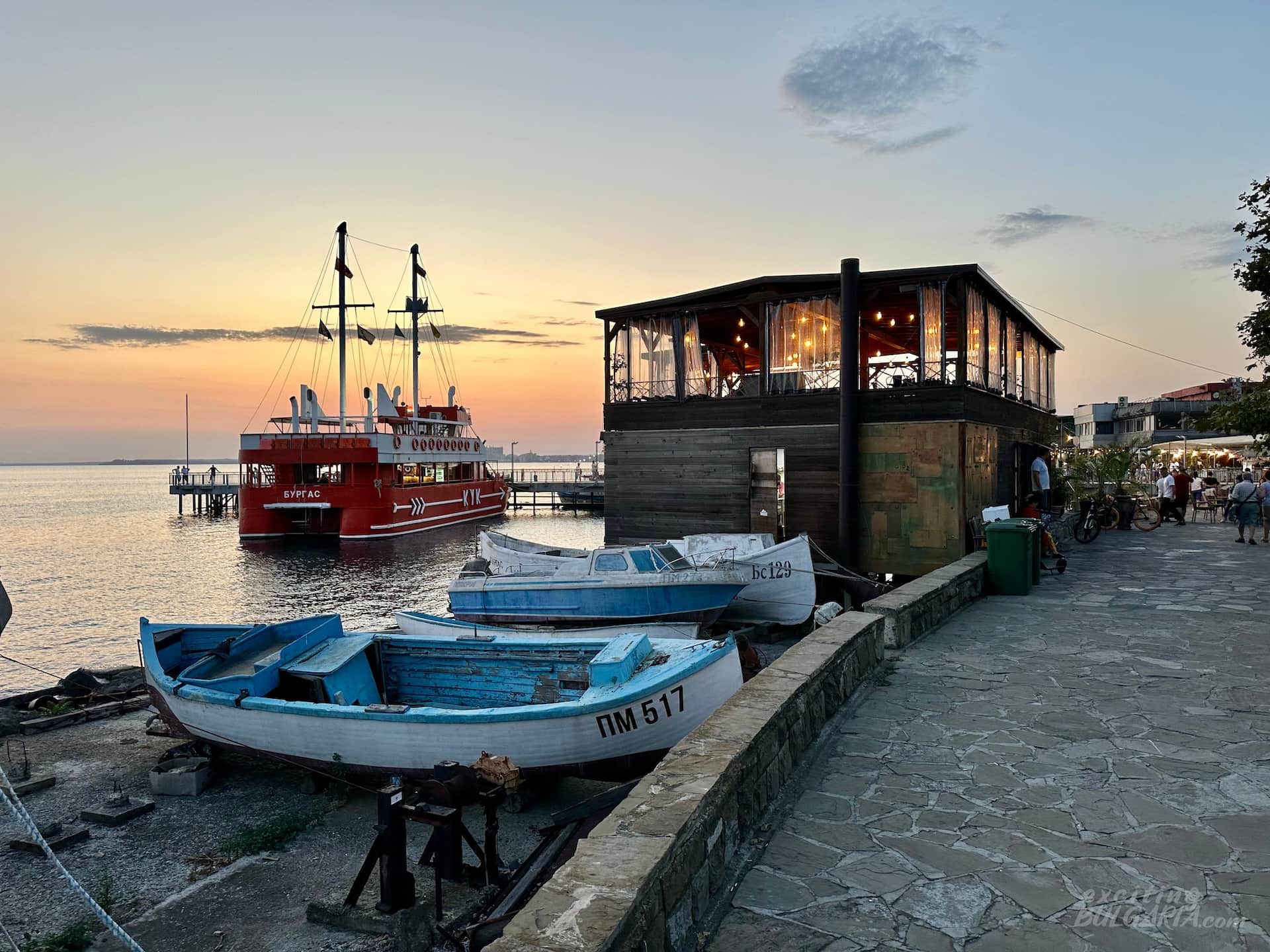
Fountains in the Sea
Since September 2023, Pomorie has a new attraction: fountains located in the sea near the old part of the town, in front of Hotel Saint George. These fountains have become a popular evening spot for both residents and visitors, drawing hundreds of people each night to enjoy the blend of water displays and coastal views.
Historical Museum
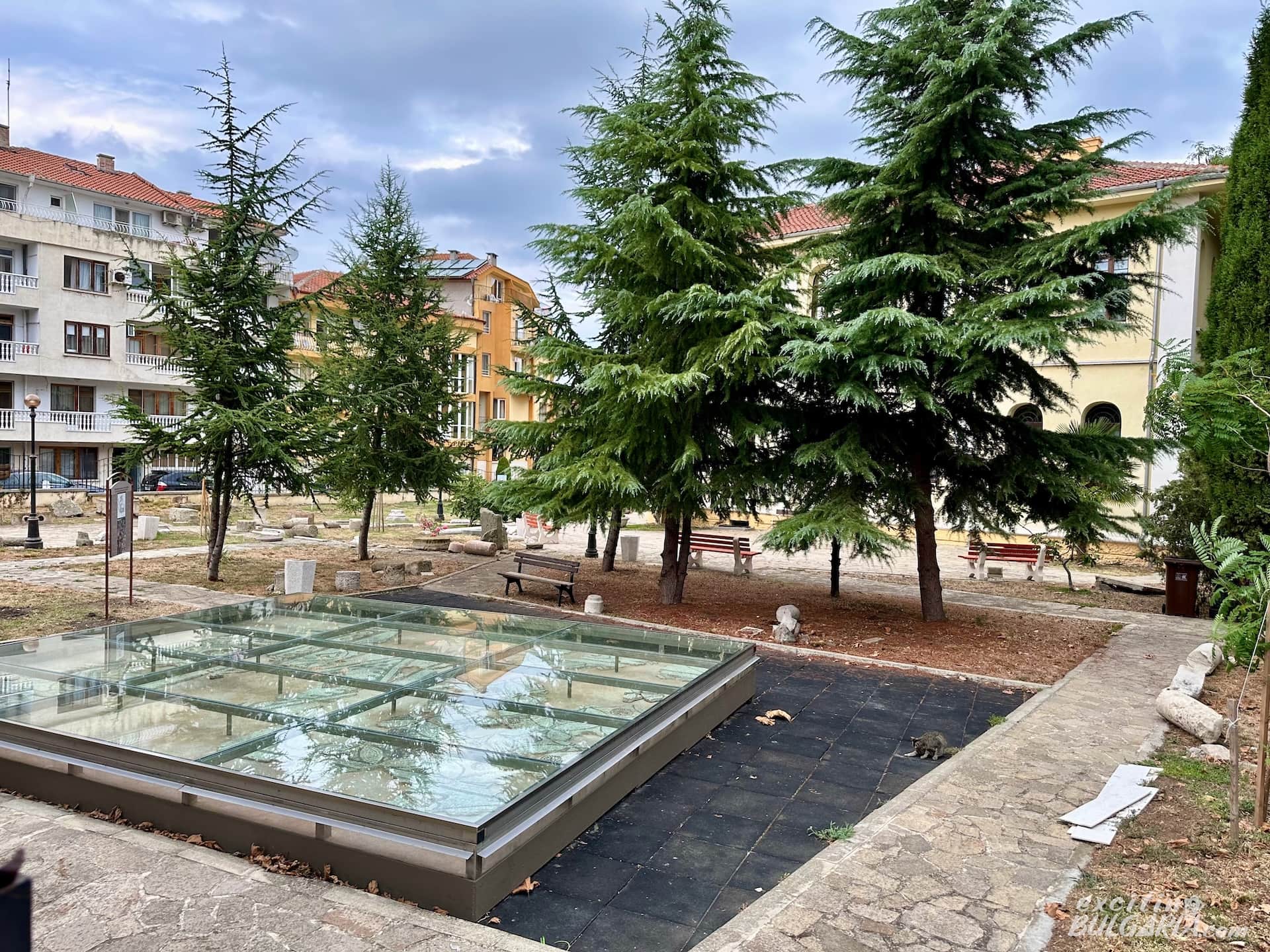
The Historical Museum in Pomorie has been preserving and exhibiting the cultural-historical heritage of the town and region for nearly two decades. Housed in a 19th-century building that was originally a Greek girls’ school, the museum features a rich archaeological exhibition with unique artifacts from prehistory to medieval times. The numismatic collection includes coins from Anchialo, Nesebar, Deultum, Marcianopolis and various other historical periods, providing insights into the region’s diverse history.
Ancient Dome Tomb (Thracian Tumulus)
The Ancient Dome Tomb near Pomorie is a unique structure dating from the 2nd-3rd centuries AD. Located west of the town along the road to Burgas, it served as a mausoleum for a wealthy family where pagan rituals were performed. The tomb consists of a 22-meter-long corridor and a round chamber with a semi-cylindrical dome supported by a hollow central column. Its architectural design is a blend of Roman construction techniques and Thracian traditions, making it a significant cultural monument.
Location and Transport
Pomorie (BG: Поморие) is situated on a narrow, rocky peninsula extending 3.5 km into the sea. The town is surrounded by water on three sides — south, east, and northeast — and borders Pomorie Lake to the north. This location places Pomorie approximately 22 kilometers from Burgas and around 400 kilometers from Sofia.
One of Pomorie’s biggest advantages is that Burgas International Airport is only 8 km away, providing direct flights to numerous international destinations.
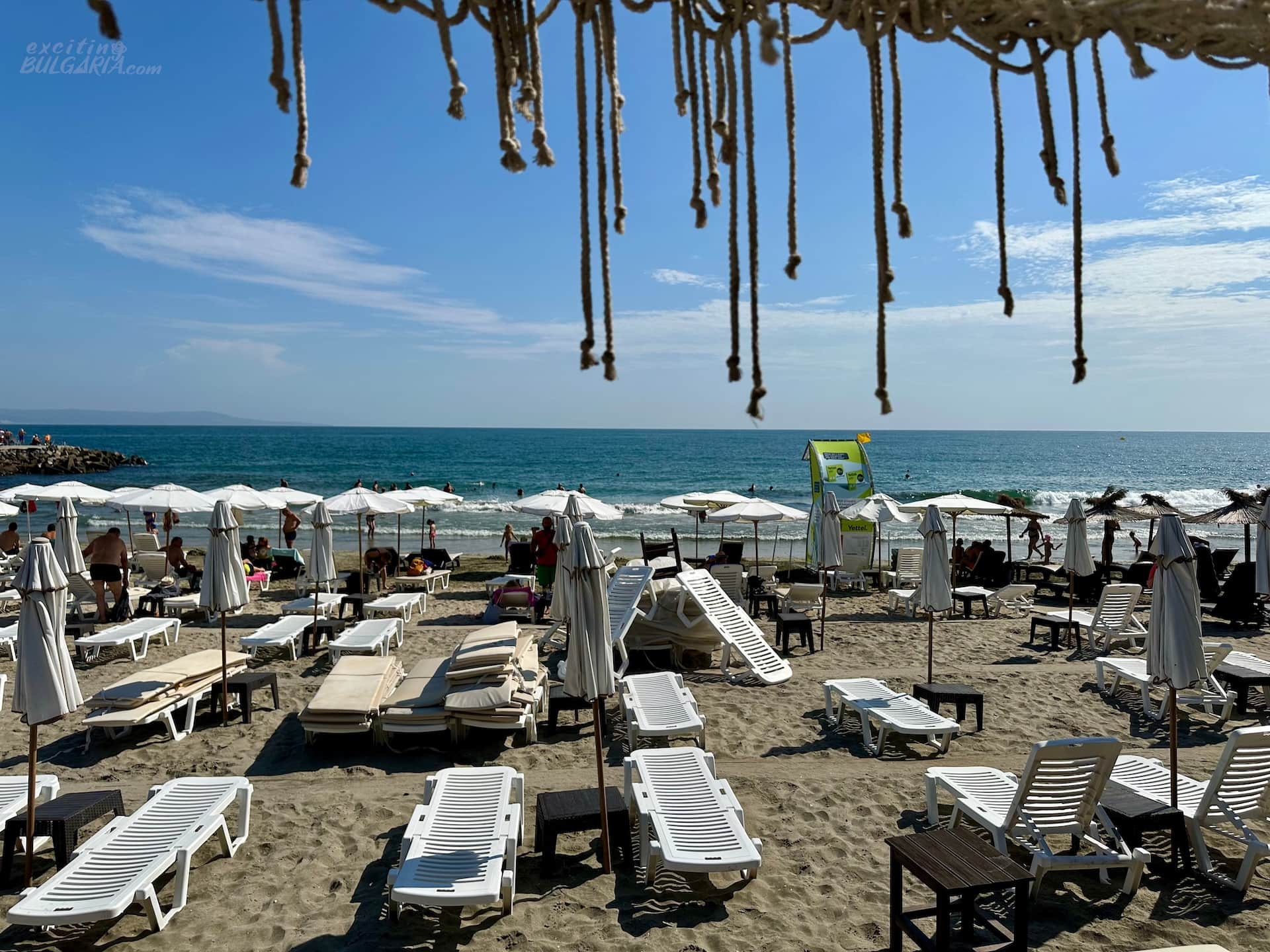
While there are no train stations in Pomorie, the nearest station is in Burgas, which connects to major cities across Bulgaria. Regular intercity buses operate between Burgas and Pomorie, departing from a park near the municipal building. Daily bus services run directly from Sofia to Pomorie, providing reliable transportation for those traveling from the capital. Additionally, shuttle buses connect Pomorie with nearby towns such as Nesebar, Sozopol and Varna via sea routes. The port of Pomorie offers direct access to these cities, making maritime travel a convenient option.
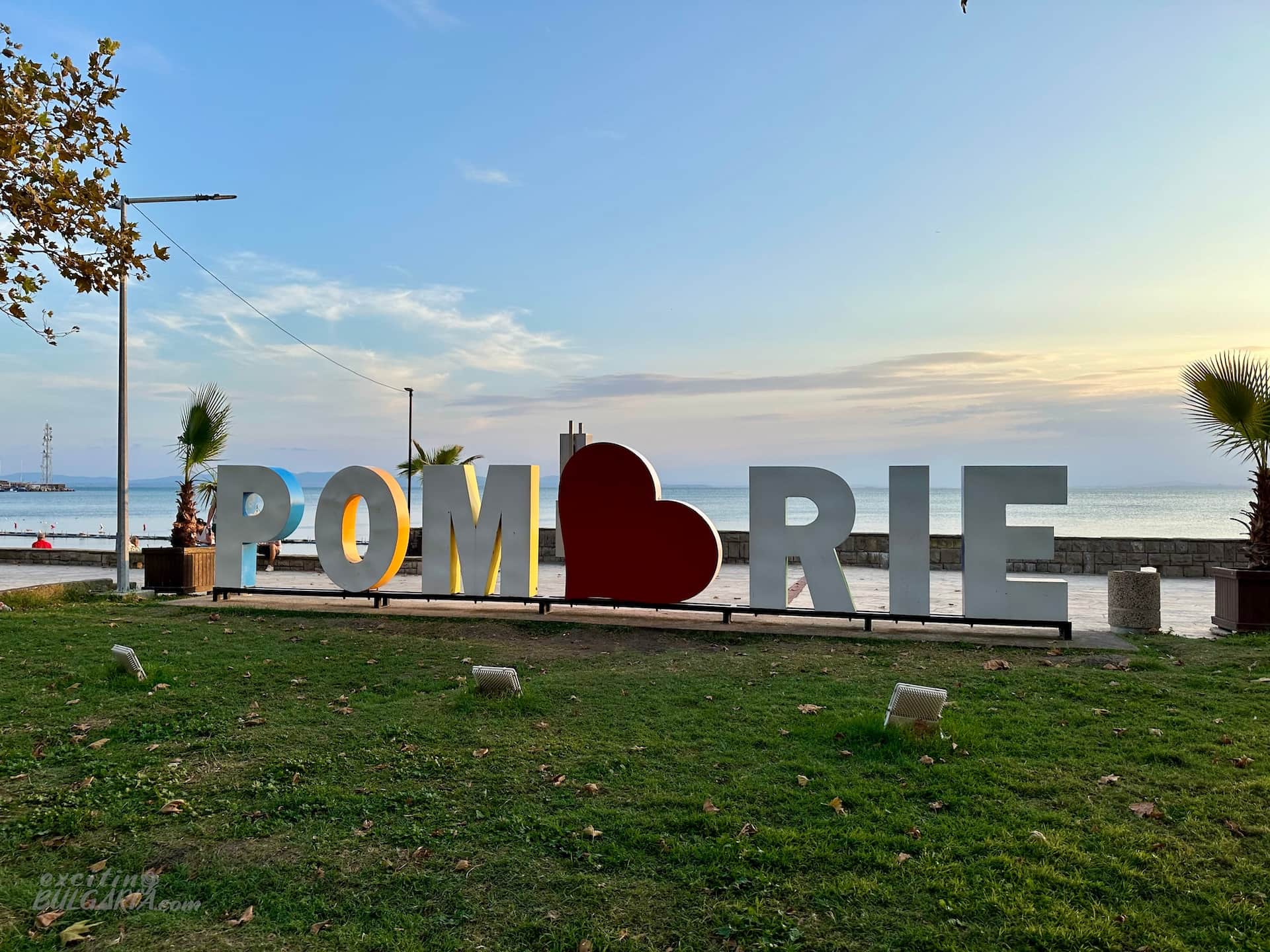
The E87 international road passes through Pomorie, linking it to both Northern and Southern Black Sea regions.